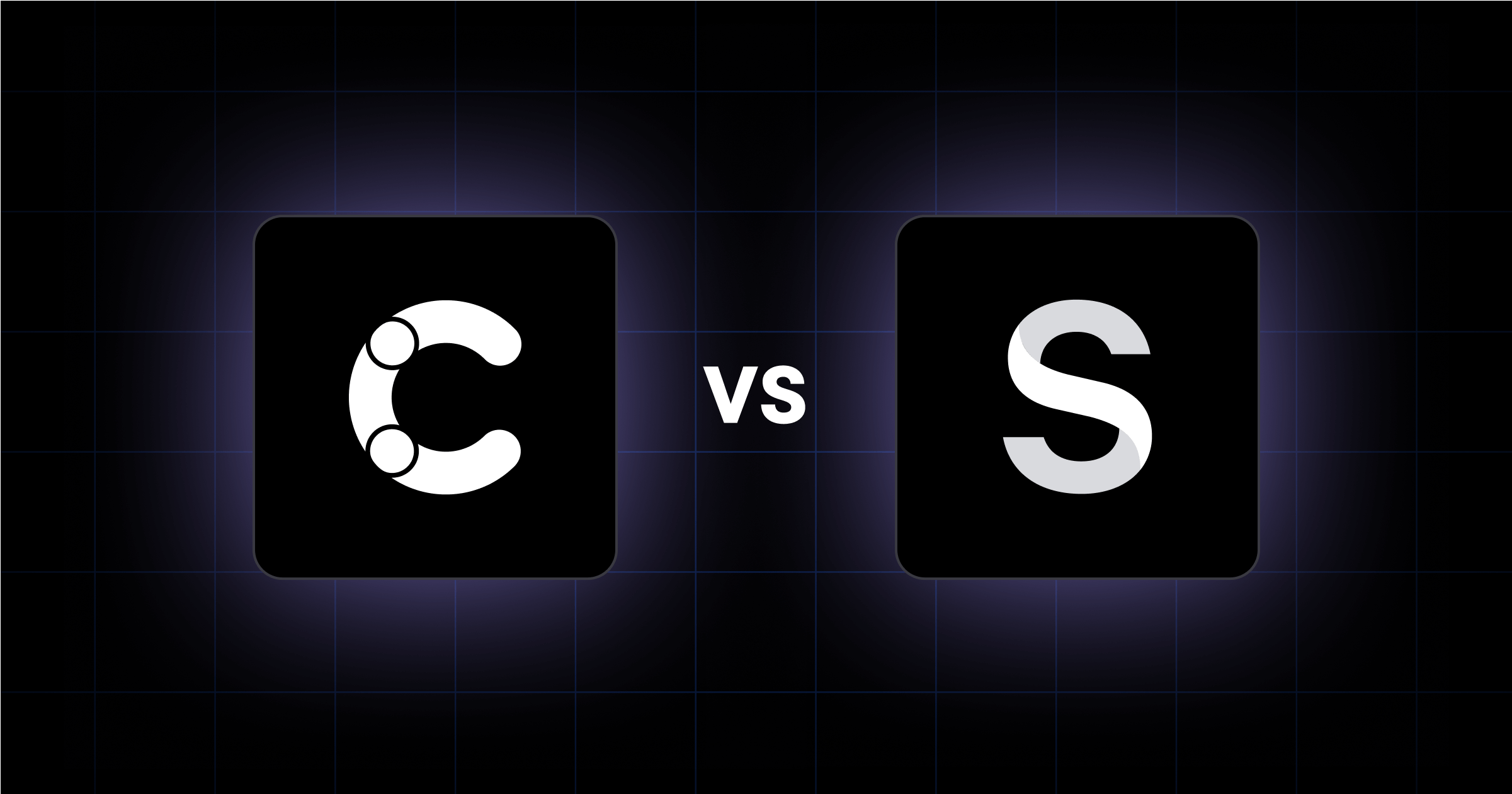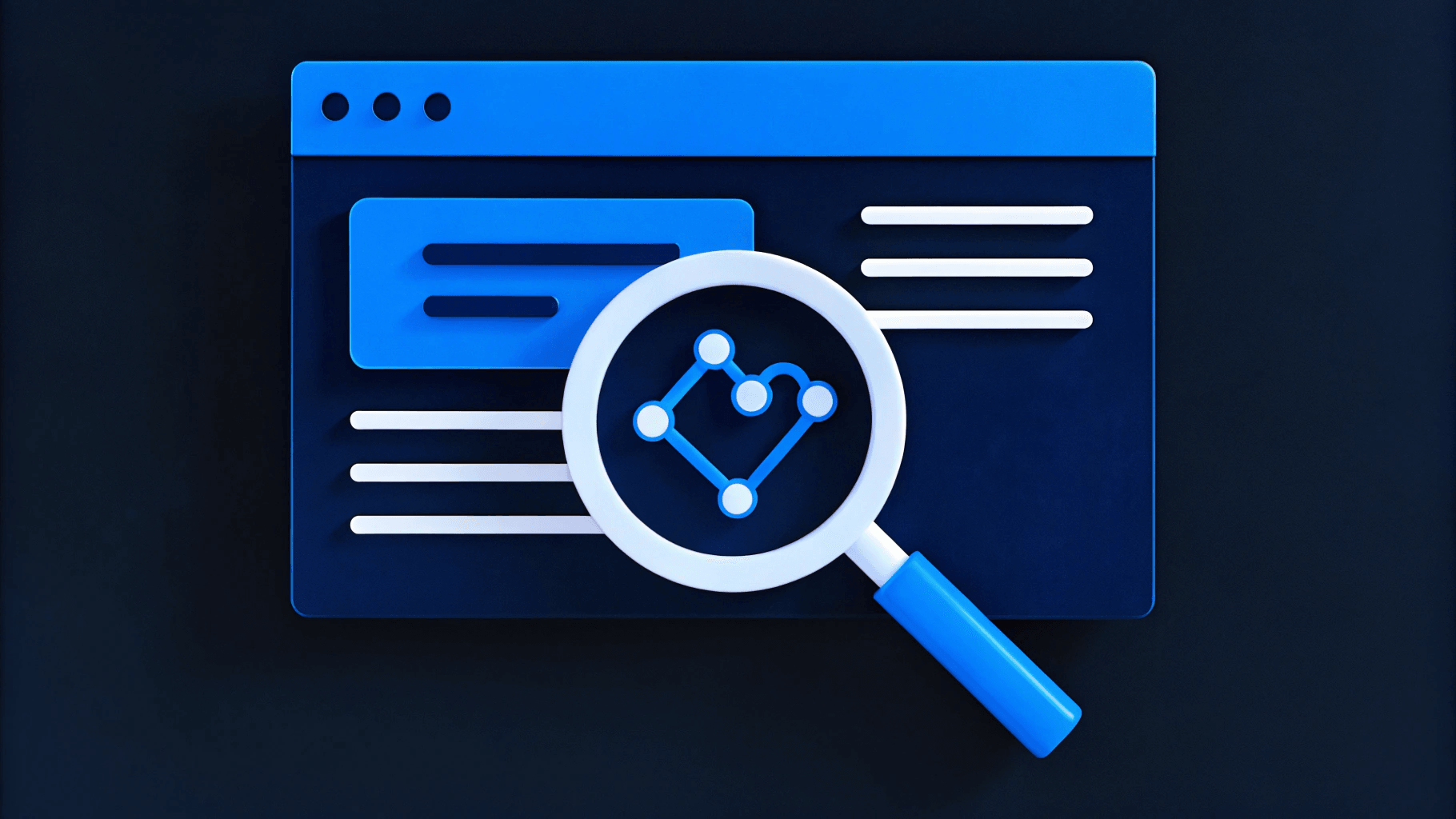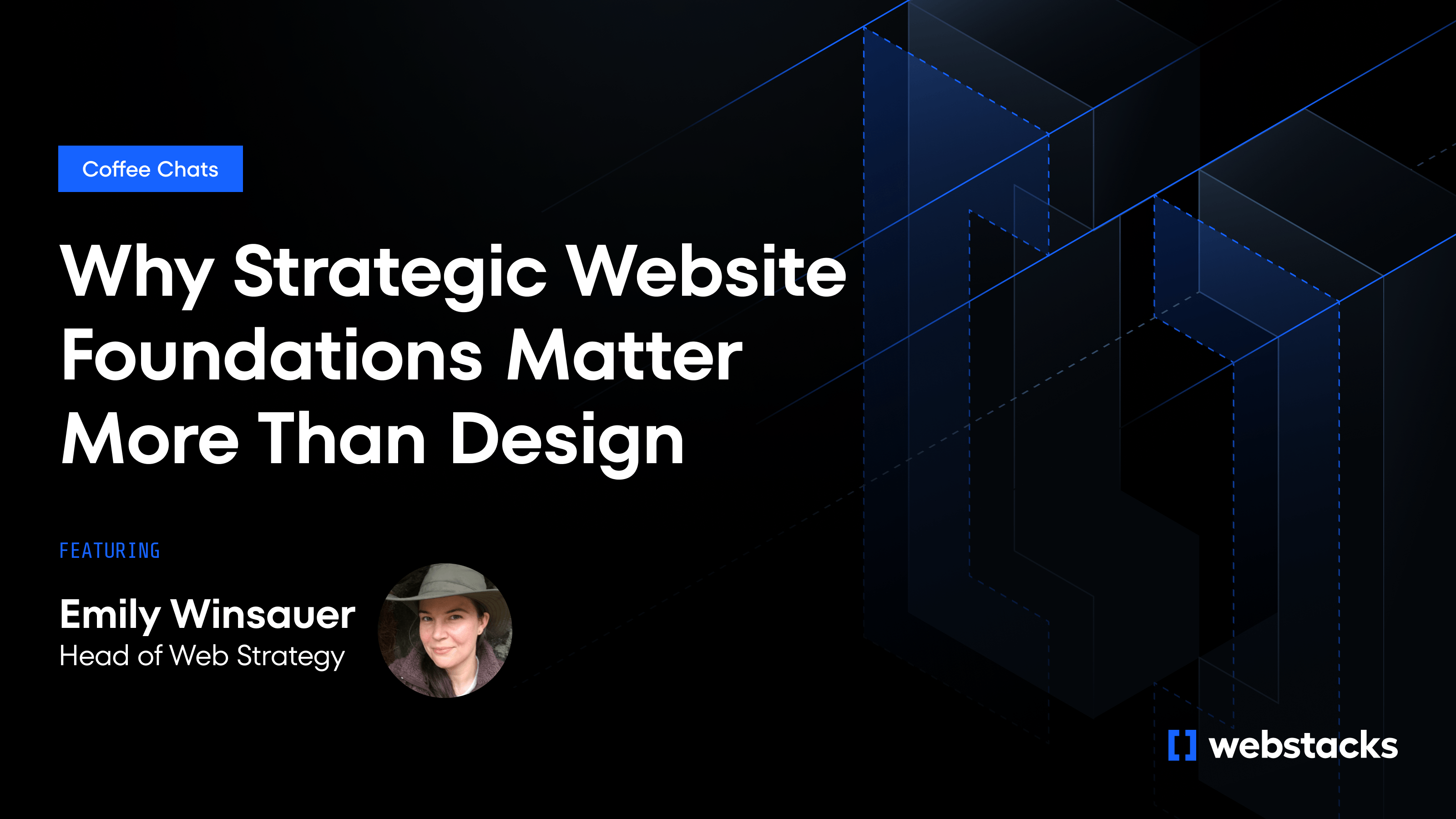When comparing Contentful vs Sanity, you're not just choosing between two headless CMS platforms. You're deciding how your content is structured, how your team collaborates, and how your digital experience evolves over time.
The Webstacks team has implemented both platforms across fast-growing B2B companies, from marketing-led SaaS teams to developer-heavy digital product orgs. And the reality is, there’s no one-size-fits-all answer.
Contentful and Sanity take different approaches to content architecture and team workflows. One prioritizes structure and scalability. The other is built for customization and speed of iteration.
In this guide, we’ll break down real-world scenarios, developer trade-offs, and use case insights to help you confidently choose the platform that works best for your team.
The Main Question: What Type of Team Are You Building For?
One of the fastest ways to choose between Contentful and Sanity is to stop thinking about features and start thinking about team dynamics.
Both platforms are powerful. But they’re optimized for different workflows, skill sets, and levels of control. Here's how we help clients think through it:
Choose Contentful for Structure, Governance, and Scale
Contentful is built for teams that want clearly defined workflows, repeatable content structures, and guardrails around how content is created and published.
It’s especially suited for:
- Mid- to large-sized marketing teams with multiple content contributors
- Content operations teams who care about approval flows, roles, and versioning
- Organizations scaling across regions, brands, or business units
- Teams migrating from CMSs like WordPress and looking for structure
If you're thinking, “We need to move fast but we also need rules,” Contentful gives you both. Editors and marketers get a clean UI to work in, and developers can define and manage content types that scale as the business grows.
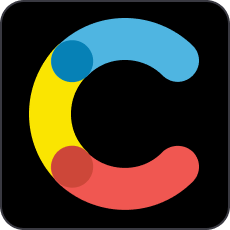
Choose Sanity for Speed, Flexibility, and Custom Experiences
Sanity is built for teams that want maximum flexibility and the development power to shape exactly how content is modeled, edited, and delivered.
It’s a great fit for:
- Developer-led organizations that treat content as a product
- Custom web apps, SaaS platforms, or digital products with unique requirements
- Teams that need real-time collaboration, dynamic content logic, or highly flexible schemas
- Businesses with in-house devs who want full control over structure and experience
With Sanity, everything is code-driven, from content models to the editorial interface itself. It takes more effort to set up, but once it’s in place, teams can move extremely fast.

How Contentful and Sanity Handle Core Use Cases
When teams are choosing between Contentful and Sanity, what really matters is how these platforms handle the day-to-day realities of publishing, scaling, and collaborating.
Here’s how each CMS performs across the workflows we see most often with growing B2B teams:
Modeling and Structuring Content
Contentful gives you a clean, structured way to define content types using a web-based UI. Developers create models, then editors populate them in a controlled environment. It’s easy to use and scales well, especially when working with consistent content across brands, pages, or locales.
Sanity, on the other hand, uses a schema-in-code approach. Developers define content models directly in JavaScript, which gives you incredible flexibility (and version control). You can model virtually anything (dynamic blocks, conditional logic, deeply nested relationships) without hitting platform limits. But it does require dev time up front.
Launching and Iterating on Content
Contentful supports scheduled publishing, roles, and approval flows. Editors work within clearly defined fields, minimizing room for error. It’s ideal for teams with strict content governance, or those publishing across high-stakes channels like product, legal, or corporate.
Sanity offers real-time editing and collaboration. Multiple editors can work in the same document simultaneously, and changes appear instantly. This makes it powerful for fast-paced editorial or design/development teams working side by side.
Multilingual and Multi-brand Management
Contentful has built-in localization. You can define language variants at the field level, set fallback languages, and structure content by locale. It’s a great fit for companies managing multi-region or multi-brand sites from one CMS.
Sanity doesn’t assume anything about your localization structure, which is a good thing if you need total control. You can define your own rules for locales, market segments, or regional variants. It’s more flexible, but requires developer setup.
Integration with Your Tech Stack
Contentful integrates easily with tools like Vercel, Gatsby, Segment, HubSpot, and more. You get REST and GraphQL APIs, and the content delivery layer is reliable and documented. If you’re building a modern marketing stack, Contentful fits right in.
Sanity goes further, especially for teams building fully custom applications. You can build your own Studio UI, create plugins, and use GROQ (Sanity’s query language) to power complex filtering and custom logic.
Learn more about implementing Sanity in our Knapsack customer story.
Team Workflows
Contentful enforces structure. Developers build the models, and editors follow defined paths. That makes collaboration predictable and scalable.
Sanity puts control in the hands of developers and editors alike. You can tailor the editing experience, build your own custom fields or dashboards, and adapt workflows to exactly how your team prefers to work.
How Contentful and Sanity Support the Developer Experience
When we talk to engineering leaders about Contentful vs Sanity, the conversation almost always comes down to two things: how much control they want, and how fast they need to move.
Here’s how each CMS stacks up for dev teams:
Contentful is Quick to Stand Up and Easy to Scale
Contentful is an API-first platform with documented REST and GraphQL endpoints. Developers can stand it up quickly, connect it to a frontend framework like Next.js or Gatsby, and start shipping.
The admin UI, content modeling interface, and environment management tools are built in, so there’s less code to write and fewer things to maintain. For teams with limited dev bandwidth or a shared dev/marketing ownership model, this simplicity is a plus.
That said, Contentful’s structure can feel limiting for complex projects. Content models are defined via the UI (or via migration scripts), and while it’s possible to customize workflows, it’s not as open-ended as Sanity.
Sanity Offers Full Control, Full Customization
Sanity takes a “schema-as-code” approach. Developers define content types, validation logic, editorial interfaces, and even workflows using JavaScript.
You’re not confined to a fixed UI. You can build your own Studio interface, tailor fields to different roles, and even create custom plugins for internal tooling.
The tradeoff? It takes more time up front. You’ll need to invest in the initial configuration, and likely have an ongoing dev point of contact to support iteration. But if your content is deeply intertwined with your product or platform, this flexibility is worth it.
Pricing, Scale, and Total Cost of Ownership
Both Contentful and Sanity offer usage-based pricing models, but how they structure that pricing can vary significantly.
Contentful Offers Predictable SaaS Pricing, Higher at Scale
Contentful’s pricing is tiered based on usage, which includes content types, users, API calls, and environments. You can start with a free or self-service plan, but most scaling companies end up on an enterprise contract, where costs are tied to content volume and team size.
The benefits include:
- Predictable pricing for fast-moving teams
- Built-in roles, versioning, and environments help manage at scale
- Easier to model ROI against growth
Potential tradeoffs involve:
- Additional costs for high API usage or additional locales
- More rigid pricing tiers at the enterprise level
- Cost can grow quickly if your content model isn’t efficient
Sanity is Flexible for Dev Teams, Usage-Based at the Core
Sanity offers a generous free tier and usage-based pricing focused on API requests, users, and document count. You’re not paying per content model or locale, you’re paying based on actual content activity.
Sanity stands out with:
- More pricing flexibility if you’re building custom workflows or lightweight apps
- Efficient for dev teams managing multiple projects or microsites
- You only pay for what you use, which is ideal for variable publishing cycles
However, keep in mind the following cons:
- Costs can be harder to forecast without detailed usage tracking
- Some advanced features (like advanced access control or larger datasets) may require custom plans
- Initial dev setup (and maintenance) can require more upfront investment
Still Exploring CMS Options?
Not quite ready to commit to Contentful or Sanity? That’s totally normal. Many of the teams we work with are evaluating multiple headless platforms as part of a broader replatforming strategy.
Here are a few other platforms to consider depending on your use case:
- Storyblok: A good middle ground between developer control and marketer-friendly visual editing.
- Builder.io: Ideal for teams that need headless flexibility with no-code page building for marketers and designers.
- Webflow: Great for design-heavy marketing teams that want to launch fast without touching code (best for simpler sites).
- Sitecore or AEM: Enterprise DXPs for organizations looking for tightly integrated personalization, analytics, and asset governance.
If your CMS migration involves moving from a traditional to a headless CMS, make sure to download our implementation checklist so you have a better idea of what to expect.
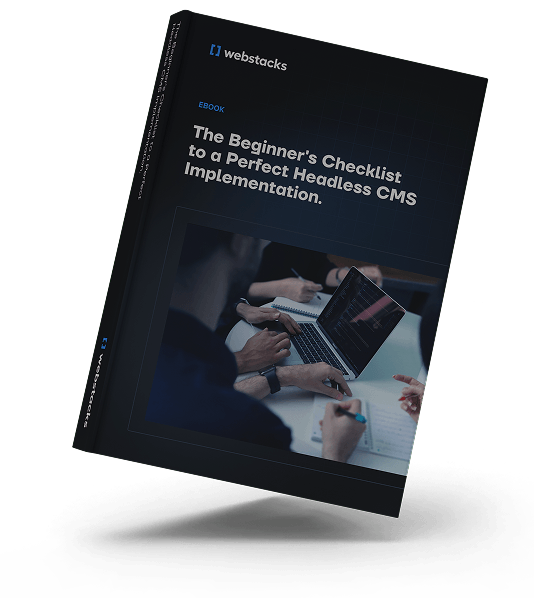
You can also check out our other CMS guides:
The Right CMS Fits How Your Team Works
Choosing between Contentful and Sanity comes down to alignment.
- Contentful is built for teams that want structured governance, scalable workflows, and a polished editorial experience from day one.
- Sanity is built for teams that want full customization, schema-level control, and the flexibility to build a CMS that fits their exact needs.
At Webstacks, we help B2B teams implement both platforms, based on how their marketing and development teams collaborate, how they scale content, and how quickly they need to move.
Get in touch with our web development experts to start off your CMS implementation on the right foot.

